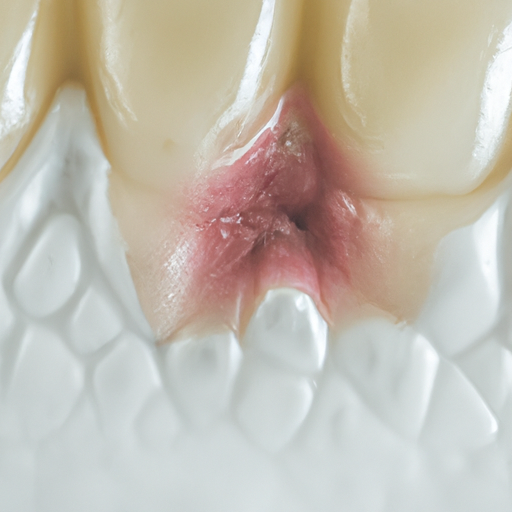Periodontitis, a prevalent oral health condition, affects millions of people worldwide. It is a serious gum infection that can lead to tooth loss if left untreated. Understanding the symptoms, causes, and diagnosis of periodontitis is crucial for early detection and effective treatment. In this article, we will explore the different treatment options available, ranging from non-surgical to surgical approaches, to combat periodontitis. Additionally, we will discuss the importance of preventing and managing periodontitis through lifestyle changes and maintenance strategies. By addressing this multifaceted condition comprehensively, we hope to provide valuable insights into the treatment and management of periodontitis to improve oral health and overall well-being.
1. Understanding Periodontitis: Symptoms, Causes, and Diagnosis
Periodontitis is a severe gum infection that damages the soft tissues and bone supporting the teeth. If left untreated, it can eventually lead to tooth loss. Understanding the symptoms, causes, and diagnosis of periodontitis is crucial for timely intervention and effective treatment.
Symptoms of periodontitis typically include red, swollen, and tender gums. Individuals may also experience bleeding while brushing or flossing their teeth, persistent bad breath, receding gums, formation of deep pockets between the teeth and gums, and loose or shifting teeth. These symptoms may not be immediately noticeable in the early stages of the disease, making regular dental check-ups essential for early detection.
Several factors contribute to the development of periodontitis. The primary cause is poor oral hygiene, allowing plaque to accumulate on the teeth and gums. Plaque, a sticky film containing bacteria, irritates the gum tissues and triggers an inflammatory response. Over time, if plaque is not properly removed through brushing and flossing, it hardens into tartar, which can only be removed by a dental professional. Tartar provides a conducive environment for further bacterial growth and worsens the infection.
Certain risk factors increase the likelihood of developing periodontitis. These include smoking, hormonal changes in women (such as during pregnancy or menopause), diabetes, certain medications that lead to dry mouth, genetic predisposition, and a weakened immune system. It’s important to be aware of these factors and take necessary precautions to minimize the risk of periodontitis.
Diagnosing periodontitis involves a thorough examination by a dental professional. During the examination, the dentist will assess the gum health, measure the depth of the pockets around the teeth using a probe, check for any signs of inflammation or bleeding, and evaluate the mobility of the teeth. X-rays or additional tests may also be conducted to determine the extent of bone loss.
Early diagnosis of periodontitis is crucial for successful treatment. If the disease is detected in its early stages, non-surgical treatments such as scaling and root planing may be sufficient to remove
2. Treatment Options for Periodontitis: From Non-Surgical to Surgical Approaches
Periodontitis is a severe form of gum disease that can lead to tooth loss if left untreated. Luckily, there are various treatment options available to combat this condition. The treatment approach may vary depending on the severity of the disease and the individual patient’s needs. In this section, we will explore the range of treatment options, from non-surgical to surgical approaches, that can effectively manage periodontitis.
1. Non-Surgical Treatments:
Non-surgical treatments are typically the initial approach for treating periodontitis, especially in its early stages. These treatments aim to control the infection and halt the progression of the disease. They include:
a) Professional Dental Cleaning: A thorough dental cleaning, also known as scaling and root planing, is performed by a dental hygienist. This procedure removes plaque and tartar buildup from the teeth and root surfaces, reducing the number of bacteria causing the infection.
b) Antibiotics: To further control the bacterial infection, antibiotics may be prescribed. Oral antibiotics, such as doxycycline or metronidazole, or topical antibiotics in the form of mouth rinses or gels, can be used to target the bacteria directly.
c) Antiseptic Mouthwashes: Antiseptic mouthwashes containing chlorhexidine or hydrogen peroxide can help reduce the bacteria in the mouth and promote healing of the gum tissues.
d) Dental Irrigation Devices: These devices, such as water flossers, can be used at home to flush out bacteria and debris from the periodontal pockets. They can complement regular brushing and flossing.
2. Surgical Treatments:
In cases where non-surgical treatments are not sufficient or the disease has progressed significantly, surgical intervention may be necessary. Surgical treatments aim to eliminate the infection, reduce pocket depths, and regenerate lost bone and gum tissues. The surgical options include:
a) Flap Surgery: Also known as pocket reduction surgery, this procedure involves lifting the gum tissue to access the underlying tooth roots and remove tartar buildup. The gum tissue is then
3. Preventing and Managing Periodontitis: Lifestyle Changes and Maintenance Strategies
Periodontitis, a severe form of gum disease, can have detrimental effects on oral health if left untreated. While diagnosis and treatment are crucial in managing this condition, lifestyle changes and maintenance strategies play a significant role in preventing the onset and progression of periodontitis.
Maintaining good oral hygiene practices is the foundation of preventing periodontitis. Regular brushing and flossing help remove plaque, the sticky film of bacteria that accumulates on teeth. Dentists recommend brushing at least twice a day with a fluoride toothpaste and using dental floss or interdental brushes to clean between teeth and along the gumline. Additionally, using an antimicrobial mouthwash can help reduce bacteria and control plaque formation.
Another lifestyle change that can aid in preventing periodontitis is adopting a healthy diet. Consuming a balanced diet rich in fruits, vegetables, whole grains, and lean proteins provides essential nutrients that support gum health. On the other hand, a diet high in sugar and processed foods can contribute to the development of gum disease. Limiting sugary snacks and beverages helps reduce the risk of plaque buildup and subsequent gum inflammation.
Quitting smoking is crucial for preventing and managing periodontitis. Smoking weakens the immune system and reduces the body’s ability to fight infections, making individuals who smoke more susceptible to gum disease. Moreover, smoking can mask the symptoms of periodontitis, making it harder to diagnose and treat the condition effectively. Therefore, seeking support and resources to quit smoking is highly recommended for those at risk or already diagnosed with periodontitis.
Regular dental check-ups and professional cleanings are essential in maintaining gum health. Dentists can detect early signs of periodontitis during routine examinations, allowing for timely intervention. Professional cleanings remove hardened plaque, called tartar or calculus, that cannot be eliminated through regular brushing and flossing. The frequency of dental visits depends on an individual’s oral health, with most dentists recommending biannual check-ups. However, individuals with a history of gum disease may require more frequent visits to monitor and manage their condition effectively



